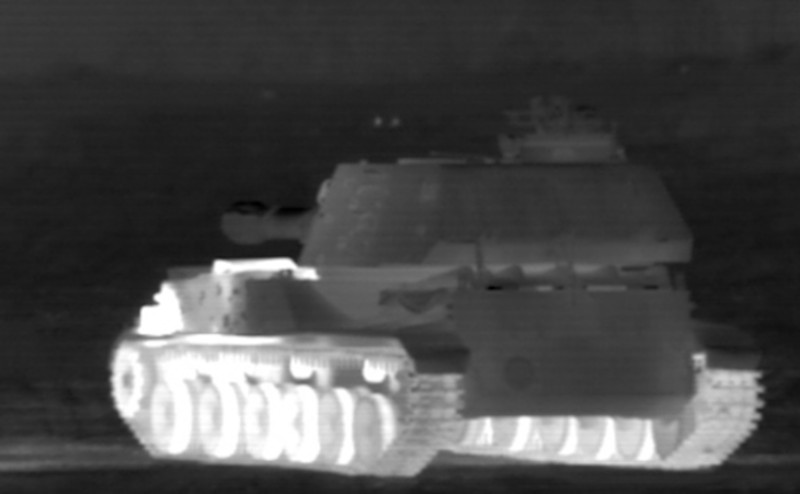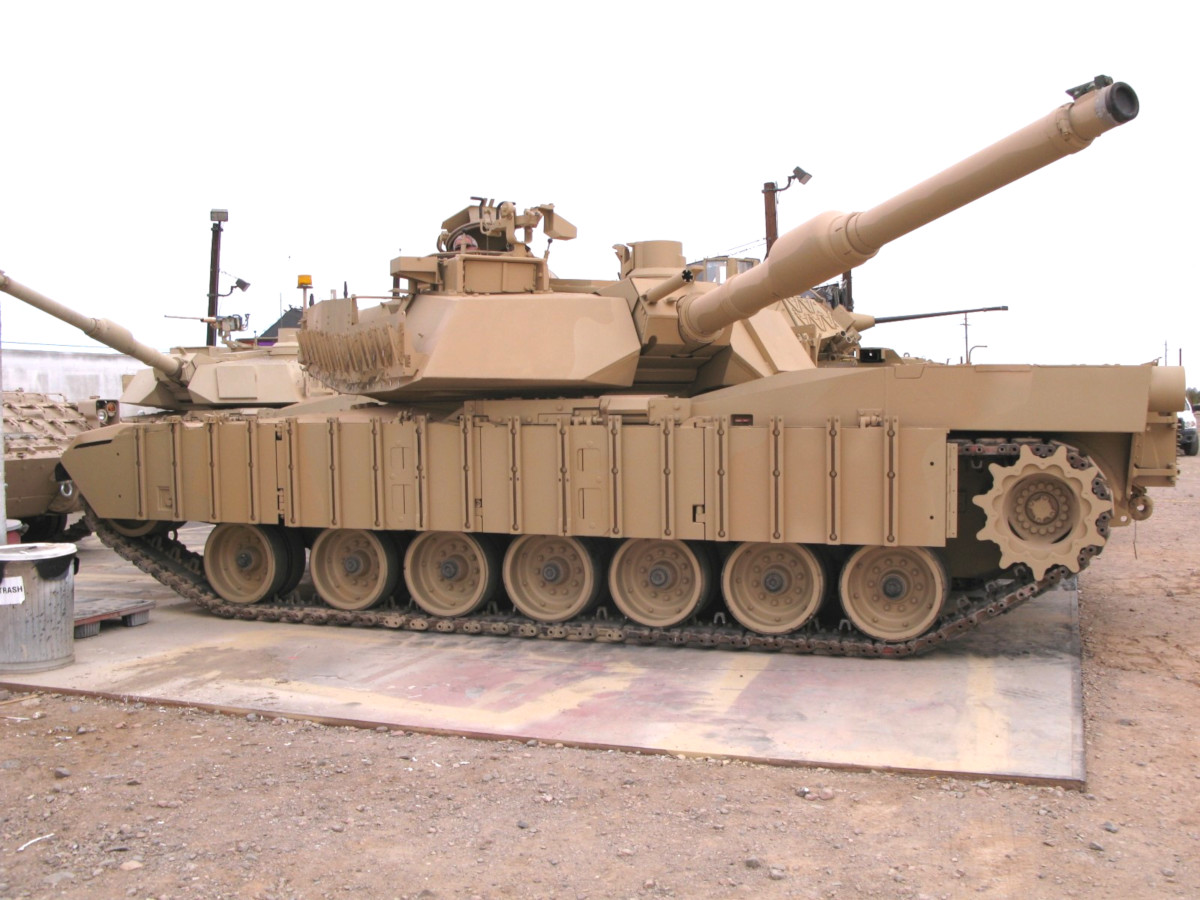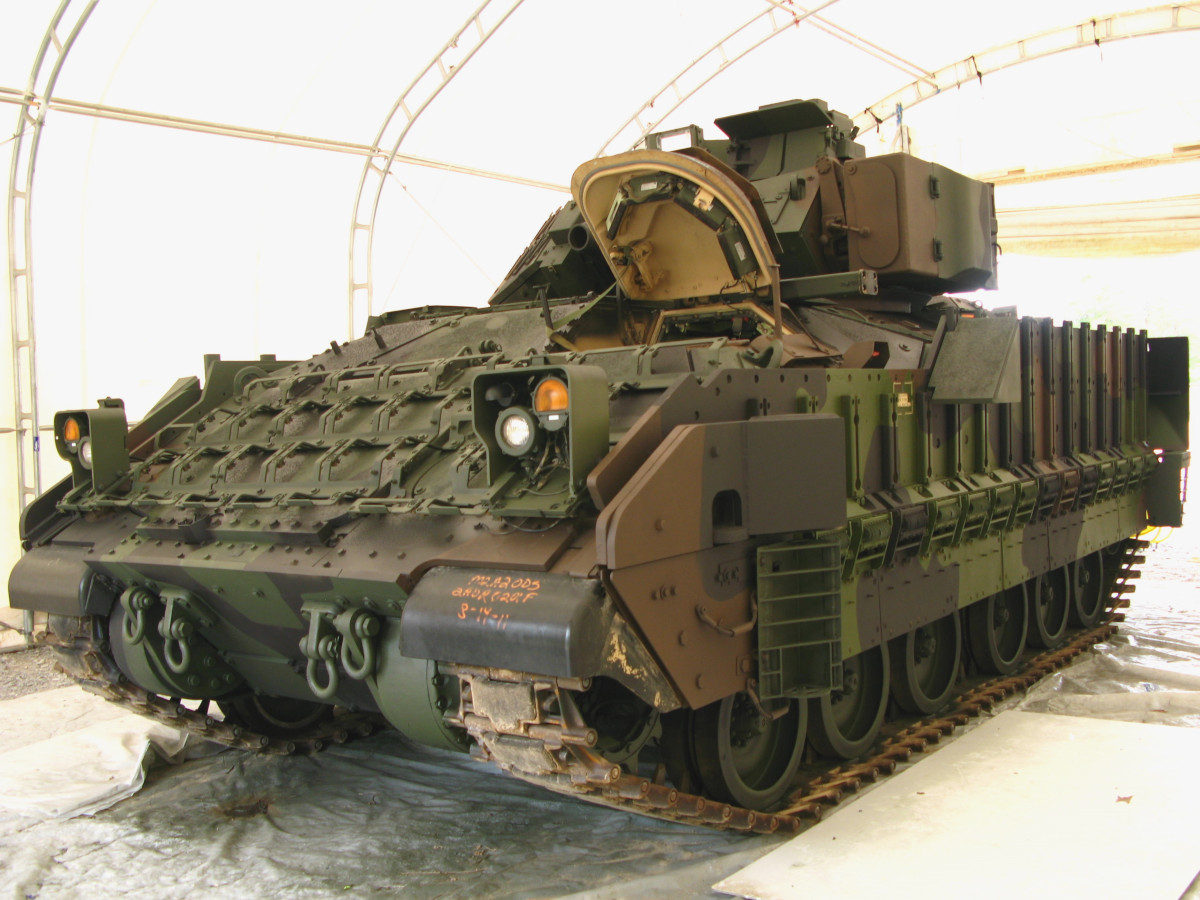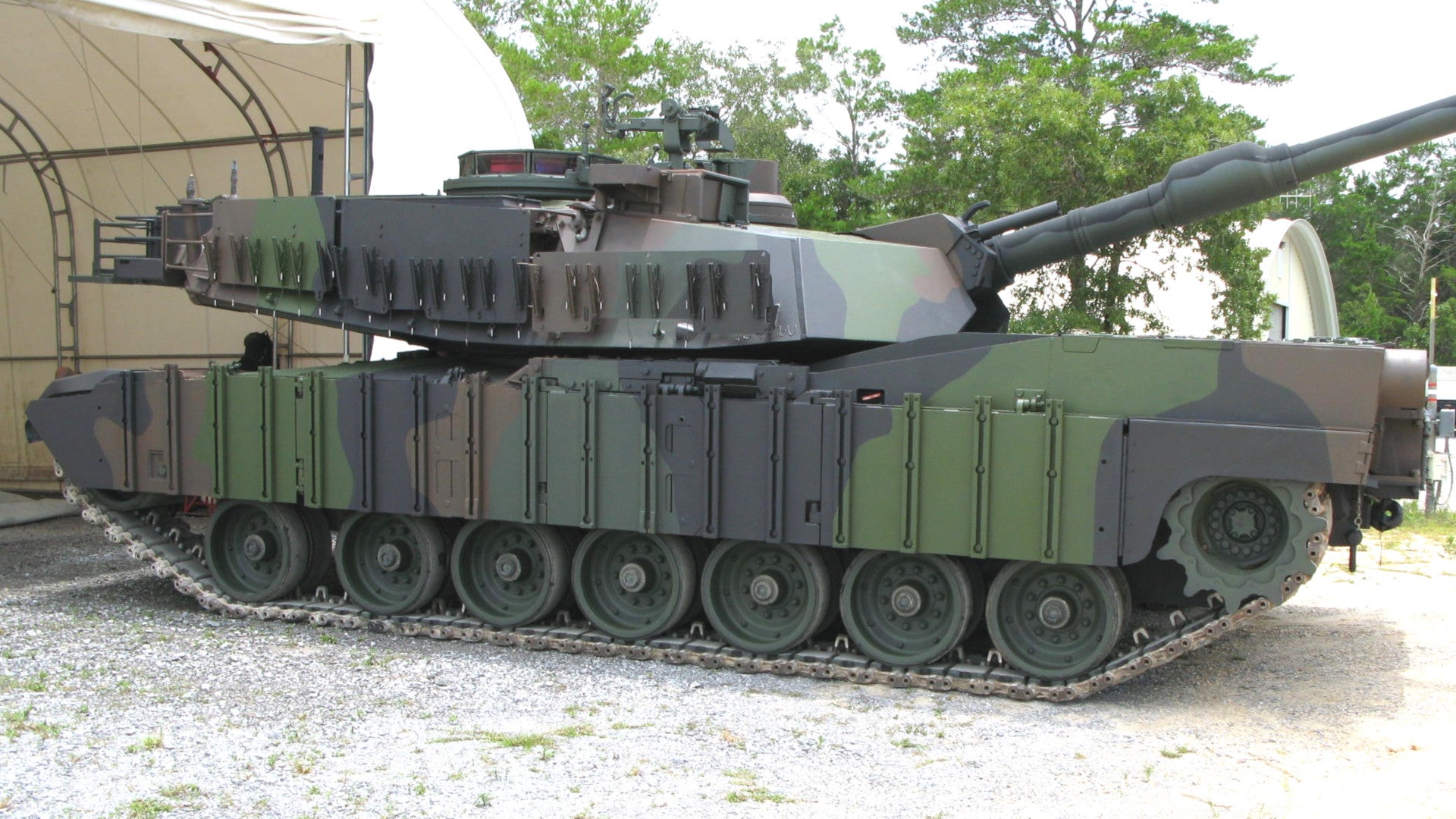The U.S. Army says it has developed a new type of paint for its M1 Abrams tanks and other armored vehicles that can help reduce their infrared signature and make the harder to detect. The coating is also a general improvement over what the service uses now and could have applications well beyond ground vehicles.
The Army’s Ground Vehicle Systems Center, the Army Research Laboratory, and the service’s Manufacturing Technology (ManTech) program worked to develop what is officially known as the Ground Vehicle Coating System (GVCS), according to an official news item on Mar. 20, 2019. The paint itself is known as “TALON,” but there is no definition available yet for what this acronym stands for.
We don’t know how the coating works exactly, but it would have to lessen the absorption of thermal energy from a vehicle’s heat-generating internal components, such as engines, auxiliary power units, and electronics. Modern armored vehicles, especially tanks and infantry fighting vehicles, have required steadily more significant amounts of power to support ever-improving sensors, communications systems, and other systems, which only increases their thermal signature. Heat builds up in places, such as the suspension and tracks, from normal operation, too, as well as just sitting out in the sun.

This has increased the risk that an opponent with thermal or infrared imaging systems will be able to detect those vehicles faster and at greater distances and then engage or avoid them. These types of optics are increasingly part of the fire control systems on vehicles and man-portable weapon systems, such as anti-tank guided missiles.
Beyond the threat of detection, these thermal signatures also offer something for various guided weapons to home in on. Reducing the heat a vehicle gives off, could make it more difficult for a missile or a bomb with an imaging infrared seeker to spot it and lock on.
At the same time, while the U.S. military has historically had an edge in optics that can exploit these heat signatures, especially after dark, this qualitative advantage is steadily eroding. This isn’t limited to developments among “great power” competitors, such as Russia and China, or small nation states, such as Iran, either. Non-state actors increasingly have access to thermal and night vision systems that, while not examples of the latest generations of the technology, offer a significant boost in their capabilities.
Technology advances and miniaturization are making infrared sensors smaller and cheaper all the time and the technology is much more widespread and accessible than it has been in the past. The affordability of Small drones capable of carrying infrared cameras is a particularly notable example of how far things have come in this realm.
Power generation requirements for armored and other ground vehicles are only set to increase in the future, which will require even more efforts to conceal their thermal signatures. The GVCS paint jobs are only one part of a broader effort to address these threats, according to the Army.
So far, the Army has applied the new paint on M1 Abrams tanks and Bradley Fighting Vehicles on a test basis. Pictures the service released of vehicles with the coating included one showing a prototype of the latest M1 variant, M1A2 System Enhancement Package Version 3 tank, or M1A2 SEPv3, which is also known as the M1A2C. The tank in question also appeared to have part of a new armor package on its turret, or a surrogate weight representing future added armor, a configuration that first publicly emerged in February 2019.

The service says the new paint also simply offers important improvements over the existing Chemical Agent Resistant Coating (CARC) it uses now. As its name implies, CARC’s major improvement over previous paints was its ability to limit the absorption of chemical and biological agents, especially liquids, to speed up the process of decontamination after an attack.
TALON has the same general attributes and personnel can apply it using existing facilities and equipment they use to apply CARC. Over the course of development, the Army says it was able to reduce the cost of the new coating per gallon by 75 percent.

“Working with industry allowed for quicker implementation of manufacturing techniques, which enabled the product to be produced on a larger scale,” Thomas Wagner, an engineer at the Ground Vehicle Systems Center, said in an official interview. “Concurrent Technologies Corporation’s long history of taking engineered products and optimizing designs and processes to reduce per unit prices will allow the Army to gain an advantage that it otherwise may not have.”
There’s no word yet on whether TALON is any safer than CARC, which contains chemicals that are so hazardous that it requires specialized paint houses and time-consuming application procedures. Many of the chemical components are so toxic that the U.S. Department of Veterans Affairs has a page dedicated to handling claims of potential exposure to CARC during the painting and curing process, as well as during certain maintenance tasks. Prolonged exposure to the mixture can result in respiratory problems, such as chronic asthma, as well as kidney damage.
The Army also sees TALON, which already comes in a number of different colors, as having joint-service applications. The new coating would offer the same benefits to ground vehicles across the U.S. military, many of which are experiencing the same growth in systems that increase their heat signature.
The applications wouldn’t necessarily be limited to land-based systems, either. In 2018, the Army says it provided U.S. Special Operations Command with a gray version specifically for the U.S. Navy’s stealthy special operations boats. These craft, which The War Zone has profiled in detail in the past, are also constantly adding to their thermal signature with new systems. Infrared signature control on boats is especially important as they operate against a cool, consistent background.

CARC is also already in use on Army helicopters and a heat reducing variant could be especially valuable in that context given the increasing proliferation of short-range, heat-seeking surface-to-air missiles, including man-portable types. The service is already in the process of adding directional infrared countermeasures to its rotorcraft, including the AH-64 Apache and CH-47 Chinook, to mitigate these threats. Other rotorcraft fleets across the U.S. military are facing the same threat environment.
Right now, the Army is planning to apply the new coating across it fleets of M1 tanks, Bradley Fighting vehicles, and Stryker wheeled armored vehicles. The service’s goal is to have the first unit fully equipped with vehicles covered in the new paint by 2021, but it didn’t say what the specific vehicle would be.
Given that the Army will be able to use its existing painting infrastructure to apply TALON, and the obvious utility of the new paint, this schedule could very well end up accelerated. It’s certainly a relatively simple addition to the service’s tank and other vehicle fleets that could have an outsized impact keeping those vehicles hidden during future operations.
Contact the author: jtrevithickpr@gmail.com
